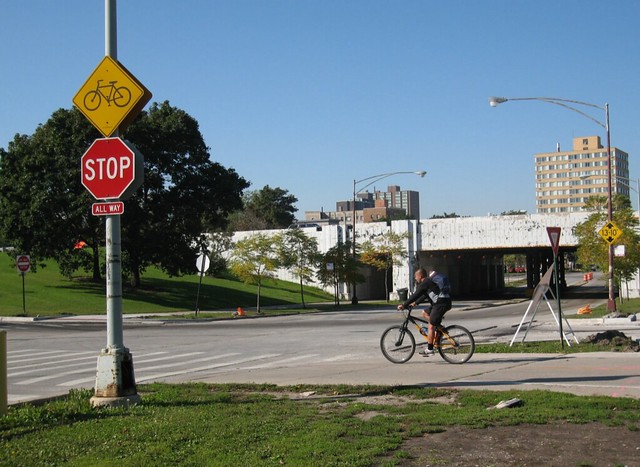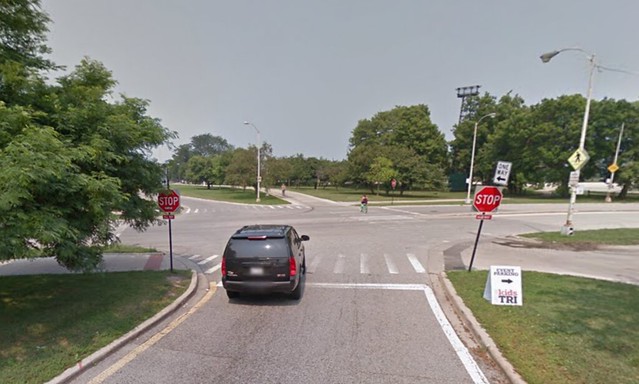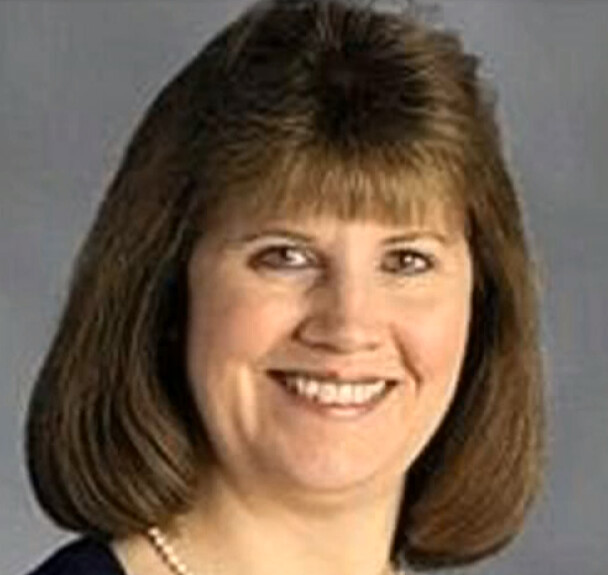
It’s been an awful two weeks for bike collisions in northeast Illinois. On Tuesday of last week, a 29-year-old woman was struck and injured on her bicycle at Jackson and Homan, by a police officer who witnesses say ran a red light without using lights or sirens. That Wednesday bike courier Blaine Klingenberg was fatally struck by a tour bus driver at Oak and Michigan, the first Chicago bike fatality of 2016
Last Monday a pedicab operator reportedly had his vehicle struck by a hit-and-run minivan driver at South Water and Michigan, but escaped without injury. Last Tuesday schoolteacher Janice Wendling and her husband Mark were fatally struck while cycling in Morris, Illinois, by one of Janice’s former students.
Also last Tuesday, an SUV driver critically injured a 61-year-old man on a bike at Wilson and the Lakefront Trail. And we’re told that on Thursday a CTA driver struck a bicyclist on Milwaukee just north of the Bloomingdale Trail, causing minor injuries.
There was one piece of good news about local bike crashes on Thursday. We learned that Scott Jacobson, who suffered a broken pelvis and horrific road rash after he was struck by a driver and dragged hundreds of feet on May 2 in Bridgeport, was finally sent home from the hospital.
A route has been proposed for Friday’s Chicago Critical Mass ride that would visit the Klingenberg crash site, as well as the white “ghost bike” memorials for several other fallen cyclists. The map includes a stop at Jacobson’s home in McKinley Park to wish him a fast and full recovery – I’ve been told his family is looking forward to welcoming the riders.
Last Tuesday’s crash in Uptown, which took place at a spot where Wilson and access ramps for Lake Shore Drive converge with the shoreline path, highlights an intersection design and signage problem with the trail. At around 7:20 p.m., the bike rider was heading north on the path and was struck by the eastbound driver as he crossed Wilson, according to police.
The victim was transported to Illinois Masonic Hospital in critical condition, police said. DNAinfo reported that one of the man’s wheels was left in the grass near the crash location.
The SUV driver, Liliana Flores, 32, a Park Forest resident, received three traffic citations and was scheduled for a hearing in traffic court on Monday, August 8, according to police.
As I’ve pointed out before, the unorthodox configuration and signage of this Lakefront Trail intersection, and similar junctions at Montrose, Lawrence, and Foster, create a confusing and hazardous situation. Not only do the east-west street, the LSD ramps, and the trail converge in one location, creating a chaotic “mixing bowl” effect, the signs at the intersections are seemingly paradoxical.

Drivers have signs telling them to “Stop” for cyclists, pedestrians, and roller skaters coming crossing the road on the trail. But path users have signs ordering them to “Yield” to traffic on the cross street.
This perplexing situation is the product of a well-intentioned but ill-conceived remix of the intersections that took place in the late 2000s. According to the Chicago Department of Transportation, the trail used to run about 50 feet east of the spot where the access ramps meet the east-west streets, and there were no signs for either street or path users at the crossings.
CDOT decided move the trail intersections west towards the ramps, creating curves in the path that encourage folks on wheels to slow down. The new layout prevents people coming off the Drive and heading east from having to stop once at the cross street and again at the path.
That might have made sense on the drawing board, but in practice the redesign seems to have resulted in unsafe intersections for bike riders. According to Illinois Department of Transportation data, obtained via Steven Vance’s Chicago Crash Browser site, from 2009-2014, 13 cyclists were injured near the Montrose junction, 13 were injured near Wilson, three were injured near Lawrence, and 13 were injured near Foster. Interestingly, one or fewer pedestrian injuries occurred at each of these locations during the same period.
So how can we make these trail intersections safer? Steven recommends pulling the stop bars for drivers farther away from the path to help ensure they hit the brakes well before a crash occurs. He adds that raised crosswalks would also make the crossings more visible to motorists and calm traffic.
Here’s hoping this tragic fortnight was just a fluke, and our morning headline stack will no longer be filled with bad news about bike crashes. Whether you’re biking, walking, or driving, as they used to say on the ‘80s police drama Hill Street Blues, let’s be careful out there.





